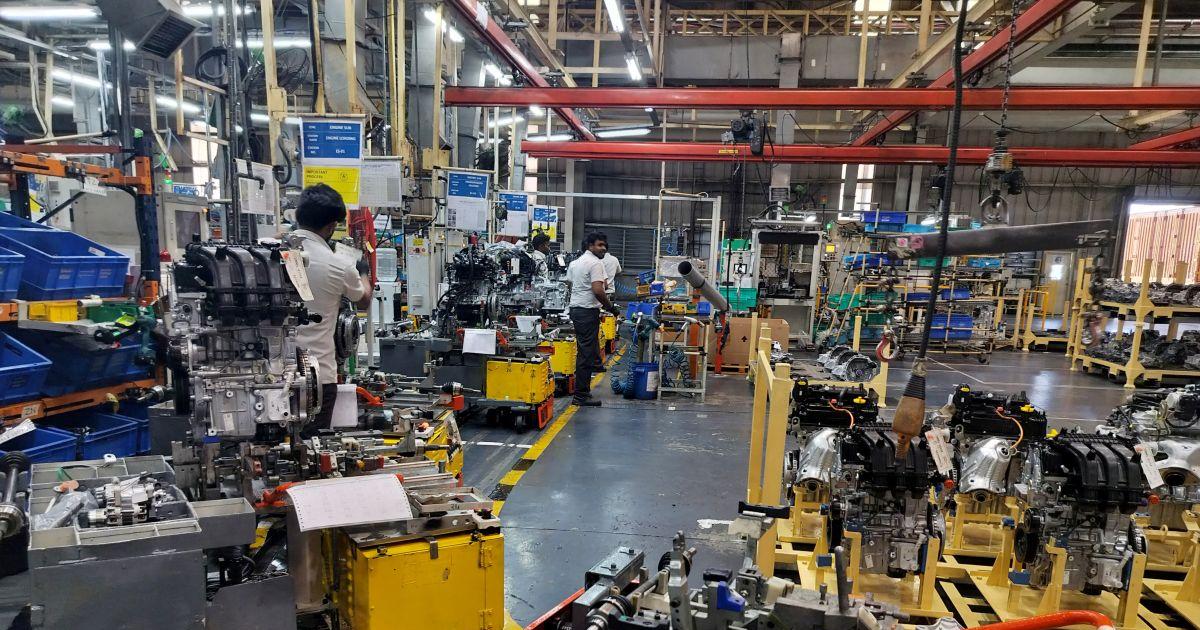India’s labour landscape is undergoing one of the biggest transformation in decades.
The government has consolidated 29 pre-Independence and early post-Independence labour laws — many of them drafted between the 1930s and 1950s — into four comprehensive labour codes: the Code on Wages 2019; the Industrial Relations Code 2020; the Code on Social Security 2020; and the Occupational Safety, Health and Working Conditions Code 2020.

Kindly note that this image has only been posted for representational purposes. Photograph: Praveen Paramasivam/Reuters
Together, these new codes aim to simplify compliance, expand worker protection, and modernise employer–employee relationships in a rapidly changing economy. The central government announced the implementation of these codes on November 21
From appointment letters becoming mandatory to gig workers receiving social security to enhanced rights for women and contract labour, the changes reflect India’s attempt to balance ease of doing business with stronger worker welfare.
So what has changed? Rediff brings you the details.
Minimum Wages
Statutory right to minimum wages has been made applicable to all workers in both organised and unorganised sectors.
A statutory floor wage will be set by the central governments and states cannot fix a lower minimum wage.
Appointment Letters
Under the new code, employers are now required to issue appointment letters to all workers.
This was not compulsory earlier.
Gig Workers
Gig workers, platform workers, and many informal-sector workers who previously lacked social security protection will now be entitled to Provident Fund, Employees State Insurance Corporation (ESIC), maternity benefits and pension, with aggregators contributing 1-2% of their annual turnover towards this.
Zomato, Uber, Swiggy, Amazon, Zepto and all app-based employers will now have to shell out more money from their pocket for gig workers.
It has also been proposed to have a dedicated fund to finance schemes for these workers to cover life, disability, health and old-age benefits.
Fixed Term Employees
Employees on time-bound contract to get full parity in wages and benefits.
Women
Under the new labour codes, women will finally get equal pay for equal work, equal opportunities to access better-paying jobs and can function on night-shift along with safety provisions.
With this, employers will no longer be able to justify lower wages for women.
Timely Wage Payment
Employers, including companies, firms or associations, shall pay wages to all workers employed by them on time and prevent unauthorised deductions, says the new labour code.
Failure to do so makes the proprietor/entity liable.
Earlier, this was covered under the Payment of Wages Act (1936). A key difference was that the Act was applicable only to employees drawing wages up to a certain limit (₹24,000 a month), leaving a large segment of the workforce uncovered.
Working Hours
The ministry has said that daily working hours could range between eight hours and 12 hours, with a weekly limit of 48 hours over six days.
As per the International Labour Organization (ILO), working hours in a week are not supposed to exceed 48 hours in a week and eight hours in a day.
This was the same in earlier law too but what changes is that workers now have an option.
This means an employee can legally work:
1. Up to 12 hours a day in a four-day week
2. Around 9.5 hours in a five-day week
3. Eight hours a day in a six-day week
Overtime still requires consent from the worker, and it must be paid at twice the normal wage rate.
Work From Home
Has been permitted with mutual consent in service sectors.
Digitisation of Compliance
This provision mandates the electronic maintenance of records, registers, and returns, cutting costs and improving efficiency.
Earlier, digitised attendance was not compulsory. Traditionally, employers were required to maintain physical attendance registers or other manual records for inspection by labour authorities.
Medical Coverage
Another major shift is health and medical coverage. Every employee above the age of 40 will now receive a free annual health checkup.
Earlier this was not included in the labour law.
Employees State Insurance coverage now applies all-India.
Accidents during travel between home and work are now deemed workplace-related, and qualify for compensation.
Working Journalists
‘Working journalists’ and ‘cine workers’ now include employees in electronic media and those in all forms of audio-visual production.
Earlier they were not included in the labour laws.
Gratuity
Under the new law fixed-term employees are entitled to get gratuity within one year of leaving employment.
Full-time employees will continue to get gratuity after completing five years in a workplace.
Factory Inspector-cum-Facilitator System
Inspectors will now act as facilitators with an objective to help employers comply with laws, rules and regulations.
Earlier the inspectors were more of policemen in the system, causing problem s to employers.
Contract Labour Welfare and Wages
Principal employers to provide welfare facilities like health and safety measures to contract workers.
If the contractor fails to pay wages, the principal employer himself has to pay the unpaid wages to the contract labour.
Earlier, the employer was not bound to provide welfare measures to contract labour nor was he bound to pay if the contractor failed to pay the labourer.
Retrenchment and Strikes/Lockouts
Government approval limit for retrenchment raised from 100 workers to 300, with states empowered to enhance the limit further as they deem fit.
14-day notice for strikes/lockout made mandatory. Meaning of ‘strike’ now includes mass casual leave to prevent flash strikes.
Migrant Workers
Inter-state migrant workers now include workers employed directly, through contractors, or migrate on their own. Benefits for them now include an annual travel allowance for going to their native place. PDS benefits have been made portable for them, and social security benefits provided.
Unorganised Workers
A fund has been established, financed through penalties and compounding fees, for their welfare.
Dependents
Definition expanded to cover maternal grandparents. In case of female employees, it also includes dependent parents-in-law.




